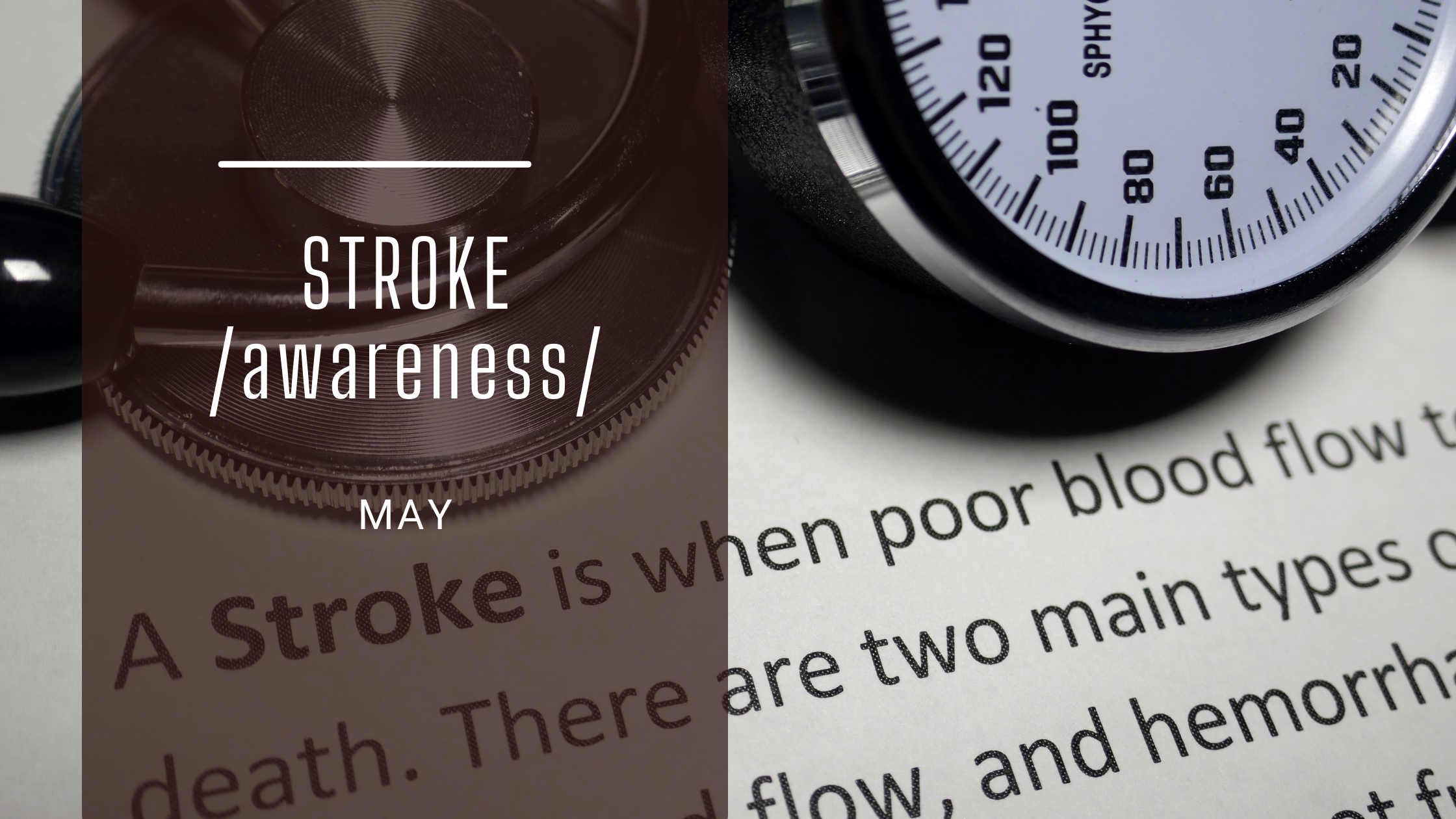May - National Stroke Awareness Month

May is Stroke Awareness Month. What is a stroke? Stroke is a brain attack. It occurs when blood vessels in the brain, called arteries, are blocked or burst. The consequences of stroke can be long-term disability and even death.
What happens during a stroke? Obstruction or damage to the arteries in the brain may prevent it from getting the necessary blood supply. This can cause brain cells to die, inflicting permanent damage. Depending on which part of the brain is damaged, an individual’s ability to speak, see, or move may become impaired. Strokes cause about one out of every 19 deaths in the U.S. each year, making it the third leading cause of death for women and the fourth leading cause of death for men. About 15 percent of all strokes in the U.S. are hemorrhagic, leaving 85% to be ischemic.
Hemorrhagic stroke occurs when an artery is ruptured, causing swelling, pressure, and damage to the brain.
Ischemic stroke occurs when blood flow through an artery is blocked.
A stroke can happen to anyone at any time. There are several risk factors for stroke, some you can manage and some are out of your control.
Risk factors that cannot be changed:
- Age: Stroke can occur at any age; 1 out of 5 people who have a stroke are under 55 and your chance of stroke increases as you get older
- Race: African-Americans, Hispanics, and Asian/Pacific Islanders have a higher risk of stroke than people of other races
- Gender: More women have stroke than men and more women die from stroke than from breast cancer every year
- Family history: You are at greater risk if a family member has had a stroke
Manageable risk factors include:
- Eating a healthy diet rich in fresh fruits, vegetables, low in sodium, and trans-fat.
- Maintaining a healthy weight.
- Staying physically active each day.
- Quitting smoking.
- Consuming alcohol in moderation.
- Preventing or treating high cholesterol, high blood pressure, or diabetes.
Recognizing a Stroke
- Weakness or numbness of the face, arm, or leg, especially on one side of the body
- Confusion or difficulty speaking or understanding
- Problems with vision such as dimness or loss of vision in one or both eyes
- Dizziness or problems with balance or coordination
- Problems with movement or walking
- Severe headaches with no other known cause
It is important to act immediately the moment you suspect stroke.
The B.E. F.A.S.T. guideline helps you remember that timely treatment is the key to saving someone’s life or quality of life.
B - Balance: Is the person experiencing a sudden loss of balance or coordination? E – Eyes: Is the person having a sudden change in vision or trouble seeing F – Face: Ask the person to smile. Does one side of the face droop? A – Arms: Ask the person to raise both arms. Does one arm drift downward? S – Speech: Ask the person to repeat a simple phrase. Is their speech slurred or strange? T – Time: If you observe any of these signs, call 9-1-1 immediately.
References:
https://niekrofoundation.org/b-e-f-a-s-t-save-a-life-from-stroke/
https://www.baptist-health.com/services/neuroscience/stroke
https://thestrokefoundation.org/stroke-awareness-month/
|
Author: Dora Noise is a Registered Nurse with 25 years Nursing experience with 20 years in Women & Children’s Health and 5 years in Medical/Surgical and Neurosurgical Health & Cardiology. She serves as a member of our Health and Wellness Ministry along with her husband Roosevelt Noise, Jr. |
 |
